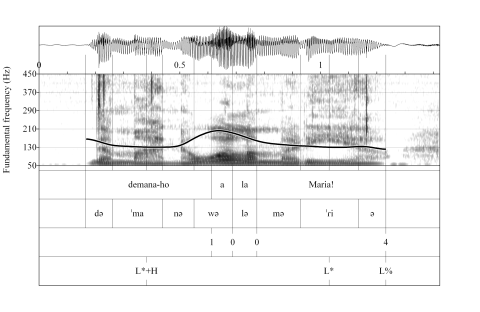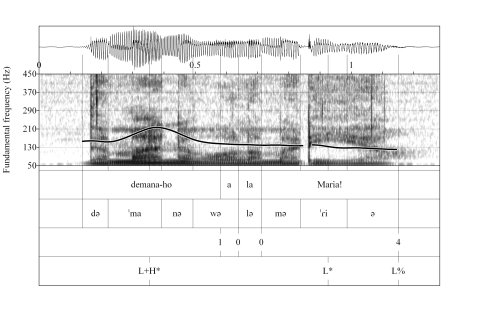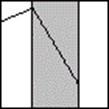L*+H

This pitch accent is realized as a low tone on the accented syllable followed by a rise on the posttonic syllable. The peak is typically realized at the end of the posttonic syllable, and sometimes later.
L+H*

This pitch accent is phonetically realized as a rising pitch movement during the accented syllable. The rise starts at the onset of the accented syllable and ends at the end of that syllable.
Example L*+H: Polite request
Example L+H*: Strong command
Demana-ho a la Maria
[Ask Mary]

Demana-ho a la Maria!
[Ask Mary!]

Explanations
These two examples are two similar sentences, but the illocutionary force is different: the first is a polite request, and the second one a strong command.
In the polite request, the prenuclear accent is L*+H: there is a low plateau during the accented syllable and then the pitch starts to rise in the next syllable.
In the strong command, the prenuclear accent is L+H*: the pitch rises during the accented syllable and the peak is aligned with the end of this syllable.
In both pitch accents, there is a pitch rise. The difference between the two is that the rise is aligned with the accented syllable in L+H*, and the pitch keeps low during the whole accented syllable and the rise starts in the next syllable in L*+H.







